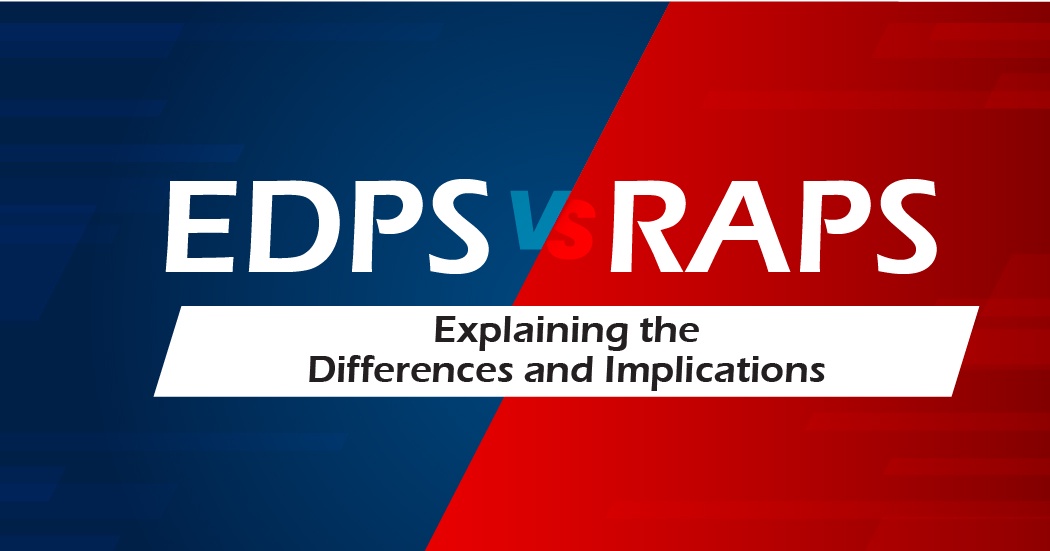In the realm of healthcare, accurate and timely capture of patient data is crucial for various purposes, including reimbursement and quality reporting. Two significant methods used for data submission are RAPS (Risk Adjustment Processing System) and EDPS (Encounter Data Processing System). Access Health Care Physicians, LLC provides an overview of these terms to help individuals understand their importance and distinctions.
Understanding RAPS
1 What is RAPS?
RAPS stands for Risk Adjustment Processing System. It is a method used by Medicare Advantage (MA) organizations to submit diagnosis data for risk adjustment purposes. Risk adjustment helps ensure that MA organizations are adequately reimbursed for the healthcare needs of their enrollees, taking into account the severity of illnesses and conditions.
2 How does RAPS work?
RAPS relies on diagnoses submitted by providers or obtained from other sources, such as medical records, to calculate risk scores for individual beneficiaries. These risk scores reflect the predicted healthcare costs of the beneficiaries. MA organizations use the RAPS data to receive appropriate payments from the Centers for Medicare & Medicaid Services (CMS).
Understanding EDPS
1 What is EDPS?
EDPS stands for Encounter Data Processing System. It is another method used by Medicare Advantage organizations to submit encounter data for risk adjustment purposes. Encounter data includes details of the healthcare services provided to beneficiaries, such as diagnoses, procedures, and dates of service.
2 How does EDPS work?
EDPS captures encounter data from various sources, including claims submitted by providers, hospitals, and other healthcare entities. This data is used to calculate risk scores and determine the appropriate payments to MA organizations. EDPS aims to provide a more comprehensive and accurate view of the care provided to beneficiaries.
Key Differences between RAPS and EDPS
1 Data Source
RAPS primarily relies on diagnoses submitted by providers or obtained from medical records. In contrast, EDPS captures encounter data from a wider range of sources, including claims submitted by providers and other healthcare entities.
2 Frequency and Timing
RAPS data is typically submitted on a monthly basis, while EDPS data is submitted more frequently, often on a daily or near-real-time basis. EDPS allows for timelier data submission and processing, which can lead to more accurate risk adjustment calculations.
3 Data Submission Process
RAPS data is generally submitted in batch files, which are processed by CMS. EDPS, on the other hand, involves ongoing data submissions through various electronic methods, such as the HIPAA X12 837 format. This enables a more dynamic and continuous flow of encounter data.
Importance of RAPS and EDPS in Healthcare
Both RAPS and EDPS play critical roles in risk adjustment, ensuring that Medicare Advantage organizations receive appropriate payments based on the healthcare needs of their enrollees. Accurate and comprehensive capture of patient data through these systems helps improve the accuracy of risk scores and promotes fair reimbursement.
Conclusion
RAPS and EDPS are integral components of risk adjustment in the healthcare industry. While RAPS relies on diagnosis data and has a monthly submission process, EDPS captures encounter data from various sources and allows for more frequent submissions. Understanding the distinctions between these terms helps stakeholders comprehend the methods used for reimbursement and quality reporting in Medicare Advantage.
FAQs
Q: Who uses RAPS and EDPS?
A: Medicare Advantage organizations use both RAPS and EDPS for risk adjustment purposes.
Q: Can providers submit data through both RAPS and EDPS?
A: Providers typically submit diagnosis data through RAPS and encounter data through EDPS, ensuring a comprehensive view of patient care.
Q: Are RAPS and EDPS used only in Medicare Advantage?
A: Yes, RAPS and EDPS are specific to the Medicare Advantage program and are used for risk adjustment calculations in this context.
Q: Do RAPS and EDPS affect reimbursement for Medicare Advantage organizations?
A: Yes, accurate data submission through RAPS and EDPS is vital for ensuring appropriate reimbursement based on the healthcare needs of enrollees.
Q: Can RAPS and EDPS data be used for quality reporting?
A: Yes, the data captured through RAPS and EDPS can also be utilized for quality reporting purposes, helping evaluate the performance of Medicare Advantage organizations.


No comments yet